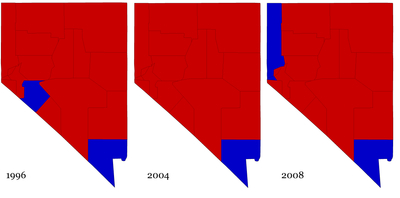Just when you thought you were going to steal all of the spotlight for your unexpected performance at the first presidential debate…
I’mma let you finish. No, no, Mitt Romney, really, go ahead and finish.
You too Barack, you three extra minutes refuter.
…Jim Lehrer happens and leaves the world scratching their heads wondering “But they never answered your questions. Why did you not follow up?”
Apparently Lehrer and Obama pregamed the event with NyQuil because really, Mitt was the only one who showed up. And thank goodness too, because the party started about five months ago and he’s just now making an appearance.
Mitt Romney owned that debate and there’s just no two ways about it.
He armed himself with specifics and called out Obama when he wasn’t presenting any. Sure, Obama started out with a cute but terribly irrelevant anniversary wish to his wife, but Romney’s first answer listed what he planned to do to create jobs while managing to work in an anecdote about a struggling single mother. Game.
Romney knew what he wanted. He wanted Obama to apologize for the last four years. Obama didn’t have to say “I’m sorry” for that to come out, because he was on the defensive for the majority of the debate. Oh, and somehow Romney managed to call him out for not offering plan specifics – Lehrer’s job – and really, I liked his spunk and audacity for doing so. Ooh, did I just grant him likability and turn Obama’s word against him? Set.
It’s probably here that I should let everyone know that I am an undecided voter in a state where my vote counts. I’m also an absentee voter with my ballot in my room, so I could vote any time I please. There, loaded gun on the table. But in this debate it’s time to move on from the economy – no thanks to Lehrer’s inability to get his questions in – and onto the Affordable Care Act, more fondly known by both parties now as “Obamacare.” Here’s my paraphrased transcript:
Romney: The ACA costs more. You are forced to limit yourself to the treatments they tell you you can have. Businesses say it makes them less likely to hire employees. We should be crafting plans in a bipartisan fashion at the state level where they know what their individual state needs.
Obama: We protect you from insurance companies. This is the same plan Romney enacted in Massachusetts. Everyone can get covered, no restrictions.
Romney: I already said you need to do it at the state level. Also, you can’t work in a bipartisan fashion. I can and I did.
Obama: (Fill in random facts about the benefits of the ACA)
No one expected Mitt Romney to win this debate. Not really. But hey, he managed to turn an issue he was flip-flopping on just months ago and turn it against Obama. And he made me believe it. And I didn’t before.
Match.






 On its homepage on 11/13/12, I found the following five stories – all related to the election – rotating in the top page element:
On its homepage on 11/13/12, I found the following five stories – all related to the election – rotating in the top page element:
 need constant connection to the web. They need it to check facts, to log stories on their respective sites, and, of course, to disseminate their findings through social media. As a journalism student, understanding the process of journalism and having the ability to track it as it happens provides invaluable insight into how news is reported and why the story never seems to be complete. The iPad fosters this kind of learning through apps like Flipboard to keep on-the-go students always plugged in.
need constant connection to the web. They need it to check facts, to log stories on their respective sites, and, of course, to disseminate their findings through social media. As a journalism student, understanding the process of journalism and having the ability to track it as it happens provides invaluable insight into how news is reported and why the story never seems to be complete. The iPad fosters this kind of learning through apps like Flipboard to keep on-the-go students always plugged in.